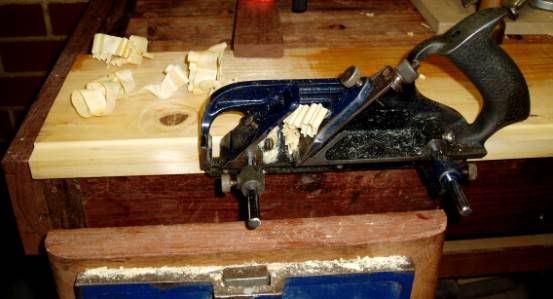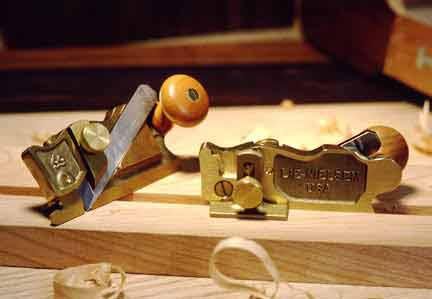ByronBlack":113mt2yy said:
I keep seeing the little Stanley 75 Bullnose plane - what exactly is the purpose of this plane?
To part you from your hard-earned cash. Lots and lots of people have bought one thinking "ooo, it's cheaper than a #90 or similar and yet it does the same thing. I'll get me one of those" - this is why they're so common. They then try using it - this is why they're so common secondhand. :wink:
ByronBlack":113mt2yy said:
Also, what plane is the one I need to make dado's, grooves and rebates. I used to own a Record combination plane but wasn't that comfortable using it - is there something else I should look at.
Ah, would you like the sensible option or the easily-carried-away one? :lol:
Dados, or housings as we used to call 'em, can go from "needing" a complete set of Stanley #39s (very expensive), set of wooden dado planes (expensive), #46 (expensive, but also versatile) right down to backsaw and chisel (cheap
and versatile).
Grooves, ideally a plough plane. Obviously a combination plane will do that and other things as well. Or a fenced router plane, as Derek shows (doing things the hard way though - design stopped grooves out of you work and you'll be happier, IMO). Or some sort of chisel-inna-block-of-wood, or a chisel freehand, or... Well it depends on how long you want to take and how long the groove is. Worth bearing in mind that ye woodworkers of yore all stumped up for a plough plane, despite the cost, 'cos it gets used a lot in traditional construction.
ByronBlack":113mt2yy said:
Also, the Record 778/stanley 78 are these for just creating a rebate on the very edge of a board, or can they be used to create stopped groove/dado?
In theory you could plane a groove as wide as the blade I suppose, but no, really they're just there for edge-of-the-board stuff. Handy plane to have. Someone suggested using it as a scrub with a dedicated spare iron - something I'm always meaning to try but Tuit, where art thou?
ByronBlack":113mt2yy said:
And finally, I see loads and loads of the wooden rebate/shoudler planes about - are these useful and will these allow me to adjust the width of a dado?
Wooden rebates are very useful indeed - skewed particularly. Not just "as is", but you can get creative to make them into moving fillisters (I'd post a pic, but my connection's up the spout again), dovetail planes, etc.
To adjust the width of a dado you want side rebate planes, as per Derek's post, or a pair of wooden ones. The latter I've never yet seen a pair of, but those who have say they have advantages over the metal ones, particularly with regard to the depth of groove or dado they can tweak. Somewhere or other I've a plan for making your own which I might be able to find, if you're interested. Although I was gutted that you weren't moved to try making the bicycle bandsaw... [-X :wink:
Cheers, Alf
Edit - I was, perforce, composing all this off line and now see I'm comprehensively beaten to the punch. Dammit. Of course it'll take another 10 minutes (if I'm lucky) for the connection to stay up long enough to add this edit...](*,)





































